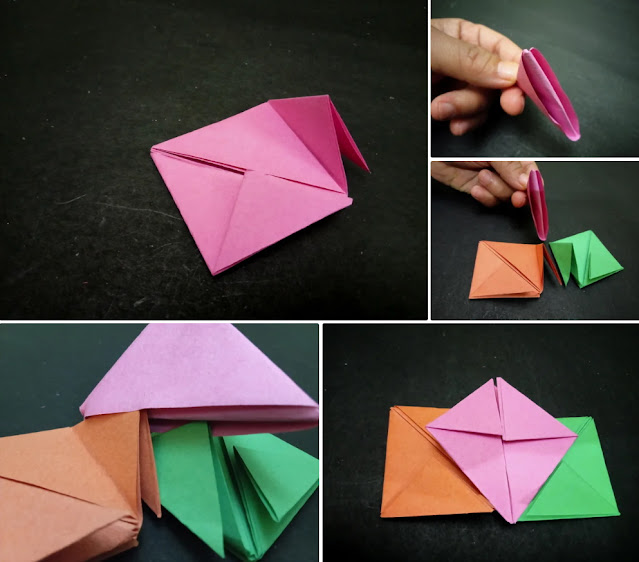Everyone Can Learn Origami !
I used to find origami difficult and boring until I was assigned a duty to take my school kids for an origami workshop. As I tried my hands folding papers with students, I found myself amazed at how a simple thing such as paper can be transformed into amazing things.
As I started following blogs and websites, trying origami myself, I find it comforting and meditative.
In this project, I'm sharing one of the origami that I love.
I tried my best to keep it simple and included a lot to picture for easy understanding. Also, I'll be breaking down each fold into steps, so it going to be a long post. Please feel free to comment if you get stuck.
Let's start.
Things We Need
Start with a square sheet of paper. Fold it in half horizontally, crease it well sharpening it with a fingernail.
Now, fold the paper in half vertically, crease it well and then unfold it.
Making Units: (2/6)
Making Units: (3/6)
Making Units: (4/6)
At this point, we will have 4 layers. For easier understanding, I have numbered it. Fold layer 1 and layer 2 to the top(front). Fold Layer 3 and Layer 4 backward.Making Units: (5/6)
Making Units: (6/6)
Fold the two flaps up to make it appear as a Frog Legs. The unit is ready.
Make 21 units of each color. We have 8 different colors so we need to make 21*8 = 168 units.
"Too Many !! Believe me, after a while, it will be relaxing and meditative"
Units Interlinking
Each unit has two Frog Legs. When folded inward with legs getting tucked inside note that there are 2 slits which are called Pockets.
Units are connected by inserting the Frog Legs parts of two adjacent units into the Pockets of a single unit.
Assembly: (1/3)
Begin by arranging the units as shown in the picture above. The square arrangement will act as a base on which we will start stacking.
Notice that the base layer is square and the second layer is in a diamond shape(Or square turned 90 degrees).




Comments
Post a Comment